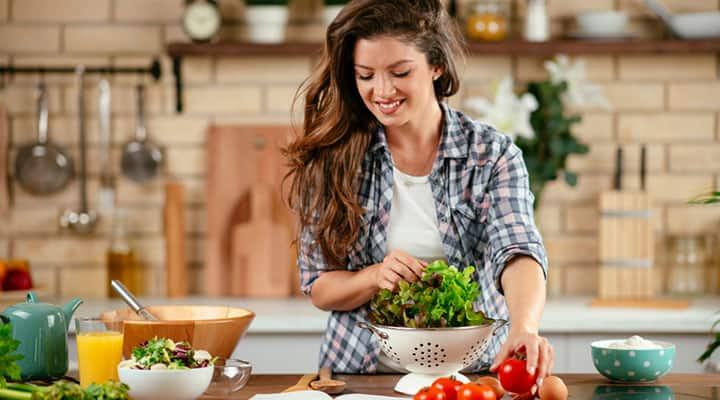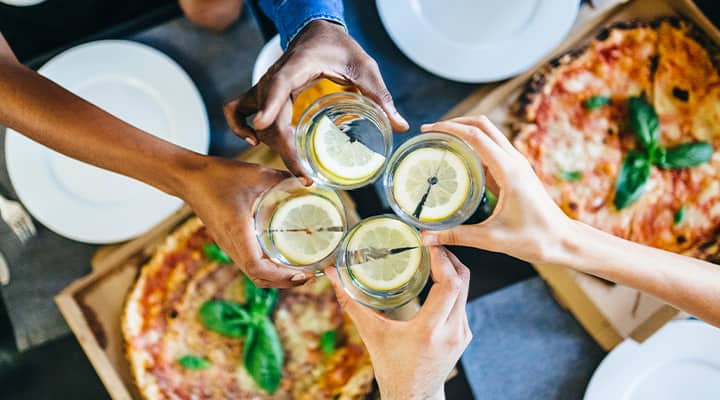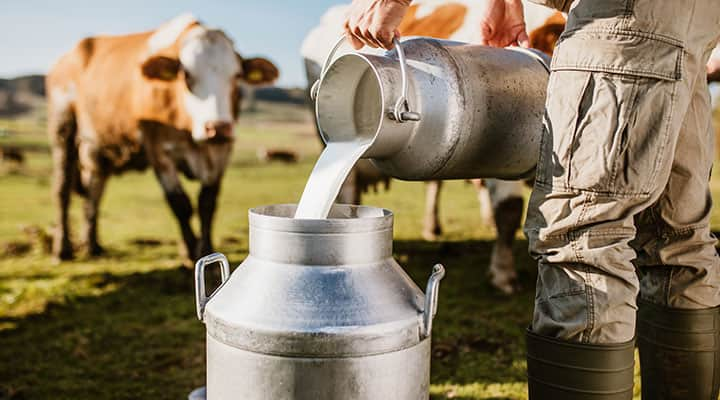
How to Go Gluten Free
Published: May 2021
Derived from the Latin word for "glue," gluten is what makes that freshly baked bread so irresistibly gooey, and that forkful of pasta have just the right mouth feel.
But while it sure makes food taste good, gluten isn't always good for us. People who have the autoimmune disorder celiac disease need to avoid even a trace amount of gluten, or may become seriously ill. And, it's also a no-no for people who have gluten sensitivity.
Health conditions aren't the only reason why some people avoid gluten, though. Many are simply trying to "eat clean," and for them, that means banishing from their pantry anything processed—including crackers, cookies, pasta and other gluten-filled foods.
There are many healthy foods that do contain gluten (hello, whole grains!)—as a dietitian, I'd be remiss to not point that out. But, for a variety of reasons, gluten isn't for everyone.
Maybe it's not for you, either. Wondering how to begin going gluten-free? Follow these tips.
DO stock your kitchen with gluten-free foods

First things first: make sure you have plenty of gluten-free foods on hand. Fresh fruits, vegetables, nuts, meats and other proteins and dairy naturally do not contain gluten. If you're buying these foods in a packaged form (canned, for example), though, check the label to ensure it's gluten free.
When it comes to grains, things get a little more complicated. Gluten-free grains include millet, oats, rice, wild rice, sorghum and teff. However, cross contamination with other grains that do contain gluten is possible, so check the label. Oats in particular should be marked "gluten free," since they're often processed in facilities that process products with gluten.
If you've asked yourself, "Is quinoa gluten free?"" we have good news. This healthy carb is actually a seed, not a grain, and therefore is free of gluten.
DO clean out your pantry

Missed spring cleaning this year? That's okay! Here is your opportunity to finally sort through your stock. Grab a big trash bag and do a clean sweep of all of the obvious offenders: see ya later, cookies, crackers, pasta, croutons and breakfast cereals! Peace out, pizza! (Of course, if the food is edible and in sealed packaging, consider donating it to a food bank rather than throwing it all away.)
Next, it's time to inspect grains and flours you've got in your cupboard. Many of them will be off-limits, even healthy ones. So that means saying goodbye to wheat, rye, barley, malt, spelt and kamut. Also banish bulgur from your shelves, and get rid of couscous, durum, matzah, semolina and triticale (which is made from wheat and rye).
Your work isn't over just yet. Your final step is to play detective, and check your fridge, cabinets and pantry for items that you wouldn't think have gluten or gluten-derived ingredients… but actually, they do. For example, the first ingredient in soy sauce is usually wheat! Carefully read the labels on all packaged and processed items—even sauces and salad dressing.
DON’T be spontaneous about your gluten-free diet

One day, knowing what gluten-free foods to eat will be second nature, but to set yourself up for success, start out with a two-week plan of exactly what you'll eat for breakfast, lunch, dinner and snacks.
It's important to make sure you stay satisfied—and without a plan in place, it's likely that you'll stray from your goals. A gluten-free diet doesn't have to be a starch-free or grain-free diet, and indeed, corn and potatoes are starchy vegetables that will fill you up and keep you on your plan. Make this GF diet the motivation you need to meet your recommended 5-7 servings of fruit and vegetables daily!
DON’T eat too many gluten-free packaged goods

You'll quickly become acquainted with gluten-free brands—and may be thrilled to discover that your organic grocery store or specialty shop offers plenty of yummy, packaged gluten-free products, like waffles, pasta and crackers.
Don't get too excited about these, though. First of all, many of them simply will not taste the same as the gluten-containing foods you are used to. They will likely even have a different texture and taste (often a little grittier, if nut flours are used to replace white or wheat flour).
And if they do taste as good as the original—well, that's a problem in and of itself! Because just like you should only eat regular cookies, waffles and other goodies in moderation, the same applies to gluten-free baked and packaged goods.
DO learn how to eat gluten-free on the go

Now that your home is a gluten-free safe haven, you'll need to find ways to stay committed when going out.
Start by letting your friends and family know about your gluten-free lifestyle—that way, they'll know not to order pizza when they invite you over for dinner (or at least will understand if you bring your own meal to eat at their home.) Some people may not take the news well and will question your new diet. Focus on the positives rather than the restrictive aspect, and let them know how much better you feel (or will feel).
Dining out can be a challenge, too—although with gluten-free becoming such a popular way of eating, many restaurants are not only understanding of your needs, but offer gluten-free options. Do your research, check the menu online or call ahead before committing to a location. Since some wait staff aren't familiar with the term "gluten sensitivity" or even "celiac disease," your safest bet may be to explain that you have an "allergy" to gluten, even though this might not be technically correct.
References
- Available at: https://pubmed.ncbi.nlm.nih.gov/33603437/. Accessed May 10, 2021.
- Available at: http://www.ncbi.nlm.nih.gov/pmc/articles/PMC3912561/. Accessed August 2, 2016.
- Available at: http://www.ncbi.nlm.nih.gov/pmc/articles/PMC3257612/. Accessed August 2, 2016.
- Available at: https://www.csaceliacs.org/grains_and_flours_glossary.jsp Accessed August 8, 2016.
- "Gluten Free Diet: Foods to Avoid vs. Safe Foods." Young Men's Health, February 2021, https://youngmenshealthsite.org/guides/gluten-free-diet-foods/
- McGill, Kelly. "Grains of Truth: Who Actually Needs To Go Gluten Free." The Dish on Science, Stanford University, October 2016, http://thedishonscience.stanford.edu/posts/truth-behind-going-gluten-free/
- Raman, Ryan, MS, RD. "The Gluten-Free Diet: A Beginner's Guide With Meal Plan." Healthline, December 2017, https://www.healthline.com/nutrition/gluten-free-diet
Like what you read?
Please subscribe to get email updates on this blog.



